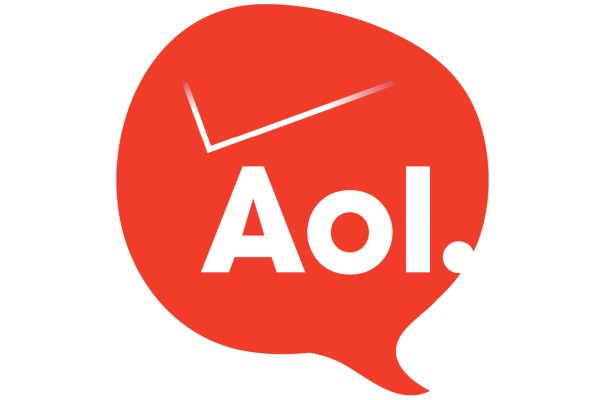Verizon, aka the owner of TechCrunch’s owner AOL, will be plugging its user tracking ad network into AOL’s online activity tracking advertising network next month, combining its user demographic data with AOL’s intel on browsing and app usage habits — with the aim of enhancing their combined ad targeting smarts.
Verizon stumped up $4.4 billion to buy AOL earlier this year in a move widely seen to be about enhancing their respective ad infrastructures by combining the user tracking and ad targeting technologies each had been building. So no surprises that’s exactly what the pair are doing now.
While — at the time of the acquisition — it was less immediately clear why Verizon might want AOL’s portfolio of content properties, looked at from an ad tech perspective, the HuffPo et al could be seen as a valuable fig leaf atop increasingly invasive ad targeting practices.
Verizon details the forthcoming AOL ad network mind-meld in a privacy notice to its advertising programs, spotted by ProPublica yesterday. Here Verizon notes that “free services” such as The Huffington Post and MapQuest are “made possible by advertising” — an emollient reminder there’s no such thing as a free lunch online. And that tracking for ad profiling purposes is of course the ‘price’ of using these “free” services.
So there’s your fig leaf.
Verizon writes:
As you may have heard, AOL recently became part of Verizon. We are providing you this notice to explain how Verizon and AOL will work together, and how this combination will help us deliver services that are more personalized and useful to you.
The Verizon family of companies offers a wide and growing variety of free services, including The Huffington Post, MapQuest, and our new mobile video service, go90. Like many others online, these services are made possible by advertising. The best advertising is for something you might actually want, and that is what we want to give you.
To help make this happen, starting in November, we will combine Verizon’s existing advertising programs–Relevant Mobile Advertising and Verizon Selects– into the AOL Advertising Network. The combination will help make the ads you see more valuable across the different devices and services you use.
After the soft soap, Verizon gets a little more specific about what this means — noting that its ad programs mostly gather (and acquire) demographic data on users, while AOL’s Advertising Network tracks browsing data, app usage and location. Ergo, combine the two, and the result is a more penetrating ad infrastructure with greater visibility of the people it’s stalking around the Internet to serve with custom ads.
Verizon uses what it calls a “unique identifier header” to track users — which has previously been dubbed a ‘zombie cookie‘ or ‘supercookie’ given it can be used to respawn trackers even when web users opt out of being tracked and/or delete tracking cookies — while AOL uses browser cookies to keep tabs on what web and mobile users do. Other trackers used by both include ad IDs from Apple and Google, according to Verizon.
Once the Verizon/AOL ad programs are combined and synced Verizon notes that its identifier will be inserted into “certain web traffic” sent to Verizon companies (including AOL) and to “certain partners” — with the result being:
- “more personalized advertising” being served by Verizon/AOL
- the linking of users app and web browsing activity, again for the purpose of targeting interest based ads across both
- an enhanced ability for Verizon/AOL to determine when different devices have the same user — again so ads can follow an individual but this time across different devices
While ad tech execs at Verizon and AOL will doubtless be salivating over the increased user ‘insight’ derived from the combination of two massive user tracking ad-targeting operations, privacy loving web users not so much. And, arguably, it’s exactly such privacy-eroding moves by the online ad industry that have been fueling growth in tracker- and ad-blocking software by web and mobile users — which in turn causes problems for online media businesses’ ad-supported models. And so the digital arms race of pro- and anti-privacy techs continues.
Of course plenty of sharing of intel on web users and their web usage already goes on within the ad industry — often lurking unspecified behind bland descriptors in privacy policies that might vaguely refer to data-sharing agreements with “third party providers” — so Verizon-AOL is by no means the only game in town. But this particular linking and syncing of ad-targeting data carries a $4.4 billion price-tag, which gives some measure of the utility the pair expect to get.
It’s worth noting that although Verizon default opts users into its tracking program, it does provide an opt out — although this requires users to either to log in to their MyVerizon account, and visit the your privacy choices page, or to call the company (on 1.866.211.0874) to ask to be opted out.
AOL also offers some opt out options for its interest-based ad program — detailed here — although the process of opting out of its tracking techs is a convoluted one, given it can require users to re-opt out if they clear their cookies or use a different browser.
Indeed, Verizon itself notes that “using browser controls such as clearing cookies on your devices or clearing your browser history is not an effective way to opt out of the Verizon or AOL advertising programs”. But you’d expect the company that spawned the zombie cookie to provide that caveat.
